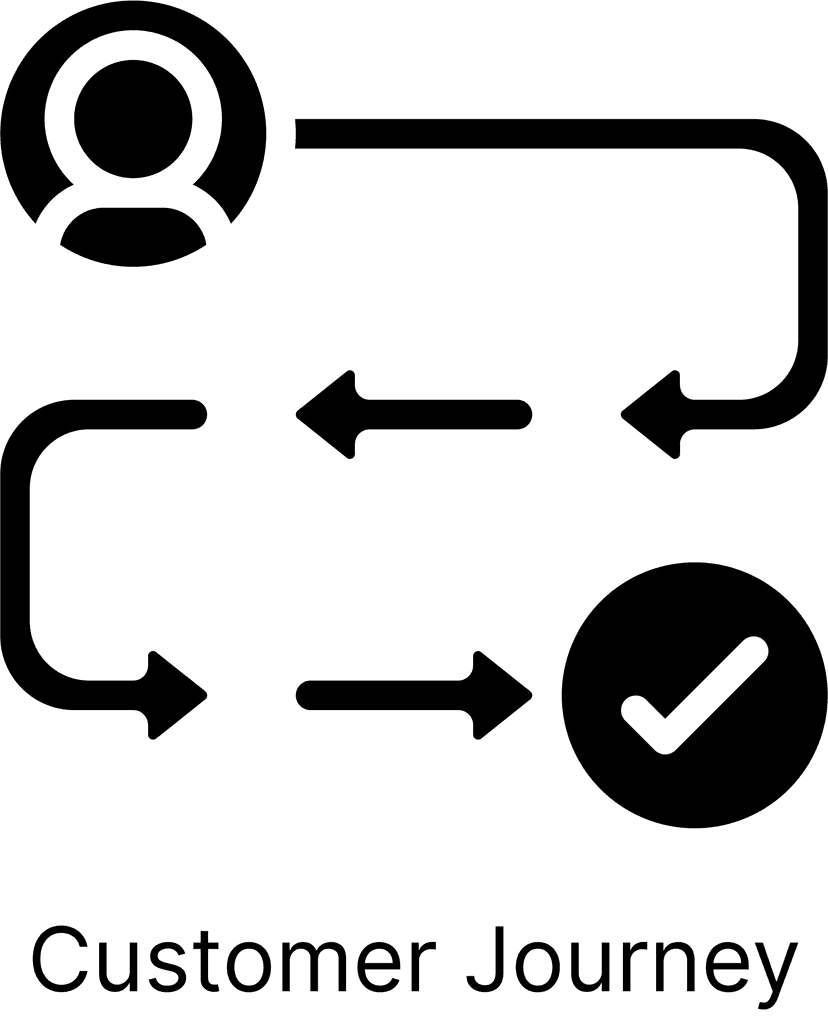Customer Journey Map

What is a customer journey map?
Definition
A customer journey map is a visual representation of the various touch-points and interactions that a customer has with a company, from their initial awareness of the company or product to their post-purchase evaluation.
Analogy
A customer journey map is like a treasure map.
Just as a treasure map shows the location of a treasure and the route that needs to be taken to find it, a customer journey map shows the various touchpoints and interactions that a customer has with a company and the emotions and needs that the customer experiences at each touchpoint. The treasure map provides a roadmap for finding the treasure, and it helps you understand the challenges and opportunities that you may encounter along the way.
Similarly, a customer journey map provides a roadmap for improving the customer experience and helps you understand the challenges and opportunities that customers may encounter when interacting with your company.
In other words
A customer journey map is a guide that outlines how a user gets from point A to point B
Why is a customer journey map important?
It's one thing to know what a customer journey map is, but that is worthless if you don't know why you should know what a customer journey map is in the first place. Let's break down the importance of this tech term based on two high level categories. We'll walk through an explanation as well as provide a score, 1-10, that shows you how much you should care about a customer journey map.
Pre-Product: 1/10
The first will be if you do not have a product yet. This means that you don't have a physical product. Maybe you're in the ideation phase, or maybe you're almost ready to start development. Whichever it is, we'll get into why a customer journey map is important and why you should or shouldn't care about it if you do not have a product.
A customer journey map isn't too relevant if you don't have a product and therefore don't have customers. You can start to envision one, but you likely have other things to focus on.
Live-Product: 6/10
The second category is if you do have a live product. Maybe you just launched your business or maybe it's been live for years and you're continuing to improve its quality. Regardless of the scenario, if your product is live, a customer journey map carries a different weight.
If you have a product, then hopefully you have customers and therefore should map out the customer journey as it will help you better understand your users and how they interact with your product.
Examples of customer journey maps
So you know what a customer journey map is, by definition. You know if you should care about it or not depending on your situation as a business/company/product. To dig in deeper, we will walk through some examples so we can make sure you really have a solid grasp on a customer journey map.
- Online retail store: A customer journey map for an online retail store might include touchpoints such as searching for products on the website, adding items to the shopping cart, checking out, and receiving and using the product. The map might also include customer emotions and needs at each touchpoint, such as frustration with a slow loading website or excitement about receiving a new product.
- Bank: A customer journey map for a bank might include touchpoints such as opening an account, making a deposit, applying for a loan, and resolving account issues. The map might also include customer emotions and needs at each touchpoint, such as feeling overwhelmed by the account opening process or frustration with long wait times to speak with customer service.
- Restaurant: A customer journey map for a restaurant might include touch-points such as searching for restaurants online, making a reservation, arriving at the restaurant, being seated, and leaving a review. The map might also include customer emotions and needs at each touchpoint, such as excitement about trying a new restaurant or disappointment with slow service.
In each of these examples, the customer journey map helps to understand the customer experience and identify opportunities for improving the customer journey. It provides a detailed view of the customer's interactions with the company and helps to identify pain points and areas for improvement.
Key Takeaways:
- A customer journey map is a visual representation of the various touch-points and interactions that a customer has with a company, from their initial awareness of the company or product to their post-purchase evaluation.
- If you don't have a product, you don't need to build a customer journey map.
- If you do have a product, you should think about putting a customer journey map together.

